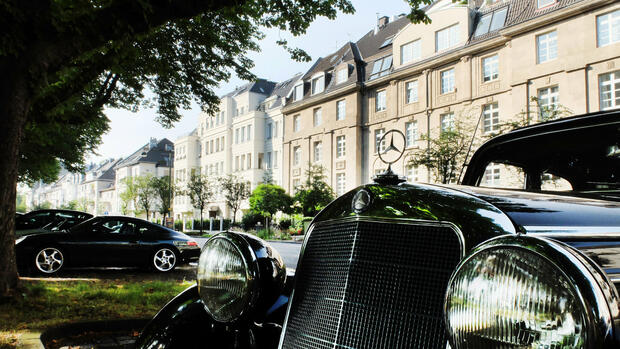In 2021, around 93 percent of the wealthiest households owned real estate.
(Photo: dpa)
Frankfurt The assets of German private households have increased significantly in recent years. The Bundesbank came to this conclusion in its major household survey for 2021, the results of which it published in its monthly report on Monday.
Accordingly, the average net wealth of private households in 2021 reached a nominal EUR 316,500, the highest level since the surveys began ten years ago. That was 83,600 euros more than in the analysis four years earlier.
The survey provides detailed data on how Germans have invested their money and how unequally wealth is distributed. The fact that the survey was conducted so long ago has to do with the fact that the evaluation is very time-consuming. As a result, current developments such as the sharp rise in interest rates and high inflation are hardly taken into account. In total, the Bundesbank surveyed over 4,100 households and almost 7,000 people.
An overview of the most important results in five graphs:
1. Distribution has become somewhat more equal
An important point is the data on the distribution of wealth. To this end, the experts at the Bundesbank consider various common dimensions. Overall, they come to the conclusion that the distribution of wealth is “slightly more equal than in the past”.
For example, the Gini coefficient for net wealth – a statistical measure of inequality – has declined slightly over the past decade. In 2010 it was still 76 percent, in 2021 it was 73 percent. In a European comparison, however, wealth remains unequally distributed.
The chart below shows that wealth is still very unequally distributed. The wealthiest ten percent of German households own more than half (2021: 56 percent) of total net wealth. Compared to the 2010 survey, however, this value has fallen. Back then, the top 10 percent of the distribution still held 59 percent of all wealth.
2. This is how the assets are made up on average
Real estate accounts for a large proportion of the composition of wealth, as the second chart shows. However, this average is very strongly influenced by the wealthiest households and says little about the composition of the wealthier households.
According to the Bundesbank, financial assets, i.e. money invested in current accounts, savings accounts or possibly in shares and funds, make up the largest proportion of assets in this group. For wealthier households, on the other hand, property ownership plays a much larger role.
3. Many wealthy households own real estate
In 2021, around 93 percent of the wealthiest households (top 20 percent) owned real estate, compared to only two percent of the wealthiest 20 percent of households.
Since 2010, the difference has become even larger. Overall, the proportion of households that own real estate has hardly changed. It rose from 44 to 45 percent between 2010 and 2021.
4. Share of households with funds and shares is increasing
On the other hand, the proportion of households that invested directly in shares and funds increased significantly more, as chart 4 shows. The proportion of households owning shares rose from 11 to 15 percent between 2010 and 2021, and those owning funds from 16 to 21 percent.
This is consistent with the results of other studies. The Bundesbank cites the high returns on shares in the period from 2017 to 2021 as a possible reason. This could have aroused interest. However, the rally on the markets ended last year when central banks around the world raised interest rates significantly due to high inflation. This has also had a significant impact on real estate prices.
5. Fewer households in debt
Concerns about financial stability have also increased due to rising interest rates. An important factor here is household debt. The larger it is, the harder it is usually to cope with rising interest rates.
As chart 5 shows, the share of indebted households has fallen recently. In the survey in 2021 it was 41 percent, four years earlier it was 45 percent. In 2010 it was a total of 47 percent. Little has changed in terms of structure. Households are more likely to be indebted through unsecured loans (29 percent) than through secured loans (18 percent) such as mortgage loans.
More: Investors expect stronger rate hikes from the ECB again





